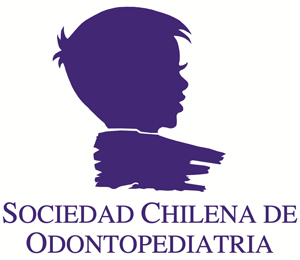Órgano oficial de difusión
científica de
Sociedad de Periodoncia
de Chile
Sociedad de Implantología Oral
de Chile
![]()
Sociedad de Prótesis y
Rehabilitación Oral de Chile

Sociedad Chilena de
Odontopediatría

Sociedad de Ortodoncia
de Chile

Federación Ibero Panamericana
de Periodoncia
![]()
Asociación Iberolatinoamericana
de Rehabilitación Oral (AILARO)
Indexada en:
Scielo, ScienceDirect,
Latindex, Redalyc
TRABAJO DE INVESTIGACIÓN
[PDF![]() ]
]
Estudio Comparativo in vitro del Grado de Sellado Marginal Obtenido en Restauraciones Indirectas de Resina Compuesta Cementadas con Cemento Autoadhesivo y Cemento con Sistema Adhesivo de Grabado y Enjuague
Comparative in vitro Study of the Marginal Seal Obtained in Indirect Restaurations Cemented with a Selfadhesive Cement and a Cement with an Etch and Rinse Adhesive System
C. Corral1, M. Bader2, C. Astorga2
1Docente Ad Honorem, Área de Biomateriales Odontológicos, Facultad de Odontología, Universidad de Chile. Chile
2Profesor Área de Biomateriales Odontológicos, Facultad de Odontología, Universidad de Chile. Chile
Resumen
Propósito
En el presente trabajo se comparó el grado de sellado marginal obtenido en restauraciones indirectas cementadas con un cemento de resina compuesta autoadhesivo y un cemento de resina compuesta que utiliza un procedimiento adhesivo con grabado ácido total e hibridización dentinaria.
Método
Se realizaron restauraciones de resina compuesta indirecta en dos caras opuestas de 20 terceros molares extraídos, cementando una de ellas con cemento de resina compuesta autoadhesivo y la otra con un cemento de resina compuesta utilizando el sistema adhesivo de grabado y enjuague. Luego de realizadas las restauraciones, fueron sometidas a un termociclado en una solución acuosa de azul de metileno, el cual sirvió como indicador de la microfitradón en la inferíase diente-restauración. A continuación se les realizó un corte transversal a las coronas pasando por ambas restauraciones y se observaron al microscopio óptico para calcular el porcentaje de infitración en relación a la longitud total de la cavidad hasta la pared axial.
Resultados
Los resultados se analizaron con test t no pareado, no encontrándose diferencias significativas entre ambos grupos.
Conclusiones
En conformidad a la metodología utilizada en esta investigación, se puede condürque no existen diferendas significativas en el grado de sellado marginal obtenido con un cemento de resina compuesta autoadhesivo y un cemento de resina compuesta con sistema adhesivo de grabado y enjuague
Palabras clave
Cementos de resina compuesta, cementos autoadhestuos, RelyX U100, microfiltración
Abstract
Aim
The present study compared the degree of marginal seal obtained in indirect restorations cemented with a self-adhesive resin cement anda resin cement that use the total etching technique and dentine hybridization.
Methods
Indirect resin restoration were made in two opposite side of 20extracted third molars, cementing one of them with the self-adhesive resin cement and the other one with a resin cement using an etch-and-rinse adhesive procedure. After luting the restorations, they were thermodcled in an aqueous solution of methylene blue, which served asan indicator of micnofiltration in the tooth-restoration interface. Then the teeth were cut passing by both restorations, the restorations were observed trough an optical microscope to calculate the percentage of infitration in relation to the total length of the cavity to the axial wall.
Results
The results were analyzed with ttest, it showed no significant differences between the two tested groups.
Conclusions
In accordance with the methodology used in this investigation, it can be conduded that there are no significant differences in the degree of marginal seal obtained wth a self-adhesive resin cement and resin cement using an etch-and-rinse adhesive procedure.
Keywords
Resin cements, selfadhesive cements, RelyX U100, microleakage
El Texto completo solo está disponible en PDF 
Bibliografía
Recibido 27 octubre 2008, Aceptado 27 febrero 2009
Correspondencia autor: Departamento de Odontología Restauradora, Área de Biomateriales Odontológicos. Facultad de Odontología, Universidad de Chile. Olivos 943 Tercer Piso. Independencia, Santiago, Chile.
Copyright © 2009.
Sociedad de Periodoncia de Chile, Sociedad de Implantología Oral de Chile y Sociedad de Prótesis y Rehabilitación Oral de Chile.